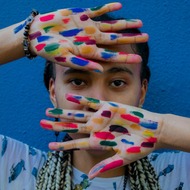Native American Hip-Hop and Freestyle in Albuquerque | If Cities Could Dance
(View Complete Item Description)Albuquerque’s thriving hip-hop and freestyle dance scene is influenced by Indigenous dancers from many tribes, Pueblos and other communities. A strong sense of solidarity holds it all together, say dancers Anne Pesata (Jicarilla Apache) and Raven Bright (Diné). The couple describes the scene as “Indigenous futurism.” Meet Randy L. Barton, or Randy Boogie, a dancer, DJ and artist (Navajo) who created The Sacred Cypher, an event that highlights how Indigenous art forms connect with hip-hop.
Material Type: Activity/Lab




















